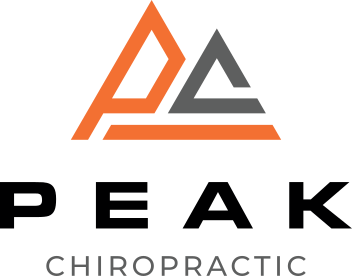You might have heard that chiropractic adjustments can ease back pain, but do they really deliver on that promise? Many individuals turn to these treatments hoping for relief from discomfort and improved mobility. While some report immediate benefits, others find their experiences less conclusive. Understanding how adjustments work and examining the evidence behind their effectiveness could shed light on this topic. What factors influence your outcome, and are there alternative treatments that might suit you better? Let's explore the nuances of chiropractic care and its role in managing back pain.
Understanding Back Pain
Back pain can stem from various causes, including muscle strain, poor posture, or underlying medical conditions. Often, it's linked to how you move and carry yourself throughout the day. If you spend long hours sitting at a desk without proper support, your muscles can weaken, leading to discomfort. You mightn't even realize how your daily habits contribute to your pain until you start paying attention.
Muscle strain is a common issue. It can occur from heavy lifting, sudden movements, or even repetitive actions that stress your back. When you push your body too hard, it can result in inflammation and soreness.
In contrast, poor posture can wreak havoc on your spine. Slouching or leaning forward puts unnecessary pressure on your back, causing pain over time.
Sometimes, back pain signals a more serious problem. Conditions like herniated discs, arthritis, or sciatica can lead to chronic discomfort. If your pain persists or worsens, it's essential to consult a healthcare professional for a proper diagnosis. They'll help identify the root cause and recommend appropriate treatment options.
Understanding your back pain is the first step towards finding relief. Recognizing the triggers, whether they're lifestyle choices or medical issues, empowers you to make informed decisions about your health.
What Are Chiropractic Adjustments?
Chiropractic adjustments involve specific techniques aimed at correcting misalignments in your spine.
These adjustments can help reduce pain and improve mobility, making daily activities easier.
Understanding the benefits of chiropractic care will guide you in making informed choices for your back health.
Techniques Used in Adjustments
Many techniques are used in adjustments to alleviate pain and restore proper function. One common approach is the diversified technique, which involves using quick, precise thrusts to manipulate the spine and other joints. You might feel a popping sensation as the chiropractor applies controlled force, helping to realign your vertebrae.
Another technique is the Gonstead method, focusing on specific areas of the spine. Here, your chiropractor will conduct a thorough analysis to pinpoint misalignments, delivering adjustments that target these problem areas directly.
The Activator method employs a handheld device that delivers a gentle, targeted impulse to specific joints. This approach is particularly beneficial for those who prefer a low-force technique, making it suitable for various patient needs.
Flexion-distraction is another technique that uses a specialized table to gently stretch and decompress the spine. This can help relieve pressure on the discs and nerves.
Lastly, some chiropractors use soft tissue techniques, like myofascial release, to address muscle tightness and tension.
This combination of techniques allows for a tailored approach to your unique condition, enhancing the effectiveness of your chiropractic care.
#
Benefits of Chiropractic Care
How can chiropractic adjustments benefit you? Chiropractic care focuses on aligning your spine and improving your overall health. When you receive an adjustment, it can help relieve pain, reduce inflammation, and enhance your range of motion. You may notice that after a session, your back feels more flexible and less tense.
One significant benefit is pain relief. Many people experience reduced discomfort from conditions like lower back pain, neck pain, and headaches following chiropractic adjustments. Additionally, regular adjustments can prevent future pain and injuries by ensuring that your spine remains properly aligned.
Chiropractic care also boosts your overall well-being. When your spine is in alignment, your nervous system functions more effectively, which can enhance your body's ability to heal itself. This improved function can lead to better sleep, increased energy levels, and even improved mood.
Moreover, chiropractic adjustments can support your athletic performance. By maintaining proper alignment, you'll likely experience improved coordination and strength.
How Adjustments Work
When you receive a chiropractic adjustment, the goal is to realign your spine and improve your overall function.
Different techniques are used to achieve this, each targeting specific areas and issues in your body.
Understanding how these adjustments work can help you appreciate their role in relieving back pain.
Mechanism of Spinal Adjustments
Spinal adjustments work by realigning the vertebrae in your spine, helping to restore proper function and alleviate pain. When the vertebrae shift out of place, it can lead to nerve interference and muscle tension. Adjustments apply targeted force to these misaligned areas, allowing the vertebrae to move back into their correct positions.
This realignment not only helps reduce pressure on nerves but also improves blood flow and circulation in the area. Better blood flow means your body can heal more effectively, relieving pain and tension.
Additionally, spinal adjustments can enhance your range of motion, making daily activities easier and more comfortable. The adjustments stimulate your body's natural healing response, encouraging the release of endorphins which act as natural pain relievers.
By restoring balance to your spine, you're also supporting the overall health of your nervous system, which is essential for maintaining proper function throughout the body.
In short, spinal adjustments are a proactive way to address misalignments, reduce discomfort, and promote ideal health. If you're experiencing back pain, considering spinal adjustments may be an effective step toward feeling better.
Types of Chiropractic Techniques
Chiropractic techniques encompass a variety of methods designed to restore spinal alignment and improve overall health. One common technique is spinal manipulation, where your chiropractor uses controlled force to adjust your spine. This method can enhance mobility and alleviate pain by correcting misalignments.
Another technique is the Diversified method, which combines precise thrusts with positioning to restore normal movement in the spine. You might also encounter the Gonstead technique, focusing on specific spinal segments to address nerve interference and promote healing.
If you're looking for a gentler approach, the Activator method utilizes a small handheld device to deliver quick, targeted adjustments. This technique can be especially beneficial if you prefer less forceful methods.
Other techniques include the Thompson Drop Table method, where a special table aids in adjustments, and the Flexion-Distraction technique, which gently stretches the spine to relieve pressure on herniated discs.
Each technique has its unique benefits, and your chiropractor will tailor the approach to meet your specific needs. By understanding these techniques, you can feel more informed and empowered about your chiropractic care.
Evidence of Effectiveness
Adjustments have gained attention for their potential effectiveness in alleviating back pain. Numerous studies have explored how these interventions might provide relief for various types of back pain. Research indicates that spinal manipulations can lead to significant improvements in pain levels and functional mobility.
When you undergo an adjustment, the chiropractor targets specific areas of your spine, aiming to restore proper alignment and motion.
In a systematic review of clinical trials, findings suggested that chiropractic adjustments often result in more significant pain reduction compared to conventional treatments, such as medication or physical therapy. Many patients report experiencing immediate relief after just one session, while others notice gradual improvements over several visits.
Moreover, a randomized control trial showed that individuals receiving chiropractic care reported higher satisfaction levels with their treatment compared to those who did not. This highlights not only the effectiveness of adjustments but also the overall experience of care you might receive in a chiropractic setting.
It's essential to understand that while adjustments can be effective, results can vary from person to person. Factors such as the duration of your back pain, its underlying causes, and your overall health will influence how well you respond to chiropractic care.
Consequently, if you're considering adjustments for back pain, consulting with a qualified chiropractor can help you determine the best approach tailored to your needs.
## Benefits of Chiropractic Care
Experiencing the benefits of chiropractic care can considerably enhance your overall well-being. By addressing musculoskeletal issues, chiropractic adjustments can help improve your quality of life in several ways. Here's what you can gain:
- Pain Relief: Chiropractic care effectively targets pain points in your back, neck, and joints. Regular adjustments can lead to significant reductions in discomfort, enabling you to engage in daily activities without hindrance.
- Improved Mobility: After a few sessions, you may notice increased flexibility and range of motion. By restoring proper alignment, chiropractic care helps your body move more freely, making physical activities more enjoyable.
- Enhanced Posture: Poor posture can lead to various health problems. Chiropractors focus on spinal alignment, which can help you stand taller and more confidently, reducing strain on your muscles and joints.
- Stress Reduction: Chiropractic adjustments can lower stress levels. The relief from physical pain and discomfort often translates to mental relaxation, allowing you to feel more at ease and balanced.
Incorporating chiropractic care into your health routine can lead to long-term benefits. With its holistic approach, you're not just addressing current issues; you're also preventing future problems.
Risks and Considerations
While chiropractic care offers numerous benefits, it's important to assess potential risks and individual circumstances before starting treatment. Although many people report positive outcomes, some may experience discomfort or adverse effects after an adjustment. You might feel soreness or stiffness, similar to what you'd experience after a workout. This is usually temporary, but it's something to keep in mind.
In rare cases, more serious complications can arise, such as nerve damage or worsening of existing conditions. If you have certain health issues, like osteoporosis or a history of strokes, you should discuss these with your chiropractor. They may recommend specific techniques or even advise against adjustments altogether.
It's also essential to evaluate the qualifications of the chiropractor you choose. Verify they're licensed and have a solid reputation. A thorough consultation and examination can help identify any underlying issues that might complicate your treatment. Make certain to ask questions about their approach and experience, especially if you have unique concerns.
Finally, remember that chiropractic care isn't a one-size-fits-all solution. What works for someone else may not work for you. It's wise to monitor your body's response post-treatment and communicate openly with your chiropractor. If you're not feeling better or experience new symptoms, don't hesitate to seek additional medical advice.
Balancing the potential benefits against these risks will help you make a more informed decision about your back pain treatment options.
Alternative Treatments for Back Pain
If you're looking for relief from back pain, alternative treatments like chiropractic care and acupuncture might be worth considering.
Chiropractic adjustments can help realign your spine and reduce discomfort, while acupuncture targets specific points to alleviate pain.
Exploring these options could lead you to a path of healing and improved mobility.
Chiropractic Care Benefits
Chiropractic care offers numerous benefits for those dealing with back pain, making it a popular alternative treatment option. By focusing on spinal alignment and overall body function, chiropractic adjustments can provide relief and improve your quality of life.
Here are four key benefits you might experience:
- Pain Relief: Regular adjustments can help alleviate pain by reducing pressure on nerves and improving blood flow to affected areas.
- Improved Mobility: Chiropractic treatments can enhance your range of motion, allowing you to move more freely without discomfort.
- Better Posture: Adjustments can correct misalignments, helping you maintain proper posture, which can prevent future back issues.
- Holistic Approach: Chiropractors often incorporate lifestyle advice, exercise recommendations, and nutrition tips, focusing on your overall well-being.
If you're struggling with back pain, considering chiropractic care could be a game-changer.
By addressing the root cause of your discomfort rather than just masking the symptoms, you can pave the way for long-term relief and a healthier lifestyle.
Don't underestimate the power of chiropractic care in your journey to recovery!
Acupuncture for Pain Relief
For many seeking relief from back pain, acupuncture presents a compelling alternative treatment option. This ancient practice involves inserting thin needles into specific points on your body, aiming to restore balance and promote healing.
You might be surprised to learn that numerous studies suggest acupuncture can effectively reduce back pain and improve function.
When you undergo acupuncture, the process can stimulate the release of endorphins, your body's natural painkillers. This response may not only alleviate discomfort but can also help you manage stress, which often exacerbates back pain.
You may find that sessions tailored to your needs provide a personalized approach, allowing for a unique experience that traditional methods mightn't offer.
Many individuals report a combination of immediate and long-term relief after treatments. While results can vary, incorporating acupuncture into your pain management plan can be worth considering.
It's important to consult with a qualified practitioner who can guide you through the process and tailor sessions based on your specific back pain.
Ultimately, acupuncture could be a valuable addition to your journey toward finding lasting relief.
Patient Experiences and Testimonials
Many patients have shared their journeys toward pain relief through adjustments, highlighting a range of experiences that illustrate the effectiveness of this treatment. You might find comfort in knowing that many people have walked a similar path, each discovering what works best for them.
Here are some common themes you might relate to:
- Immediate Relief: Many individuals report feeling instant relief after their first adjustment, experiencing a significant reduction in pain and increased mobility. This can be a game-changer for daily activities.
- Gradual Improvement: Some patients notice that while the initial relief is subtle, consistent adjustments lead to steady improvements over time. You might find that regular visits help maintain your progress and prevent flare-ups.
- Enhanced Well-being: Beyond just physical relief, numerous testimonials mention an overall sense of well-being. Patients often say they sleep better and feel more energetic, which can transform your daily life.
- Personalized Care: Many have appreciated the tailored approach of their chiropractors. You might resonate with the feeling of receiving customized treatment that addresses your specific issues rather than a one-size-fits-all solution.
These varied experiences show that adjustments can be effective in managing back pain. Whether you seek immediate relief or long-term wellness, the stories of others may inspire you to explore this treatment option further.
When to Seek Professional Help
Knowing when to seek professional help for back pain can greatly influence your recovery journey. If you're experiencing persistent pain that lasts more than a few weeks, it's time to consult a healthcare provider. Ignoring ongoing discomfort can lead to more serious issues down the line.
Pay attention to the nature of your pain. If it's sharp, shooting, or accompanied by tingling or numbness in your legs, don't hesitate to reach out for professional advice.
Additionally, if your back pain follows an injury or accident, you should seek help immediately. Even minor incidents can lead to underlying problems that may worsen if left untreated.
If you notice your mobility is affected, or if you struggle to perform daily activities due to pain, that's another clear signal to consult a professional.
Watch for other concerning symptoms as well. If you experience unexplained weight loss, fever, or bowel and bladder issues alongside your back pain, these could indicate a more serious condition that requires urgent attention.
Lastly, if you've tried various home remedies or over-the-counter medications without relief, it's time to weigh professional intervention. You deserve a tailored treatment plan that addresses the root cause of your pain.
Making Informed Decisions
Making informed decisions about your back pain treatment can greatly impact your recovery. It's crucial to gather reliable information and consider various options before committing to a course of action.
Here are four steps you can take to empower yourself in this process:
- Research Treatment Options: Look into different therapies, such as chiropractic adjustments, physical therapy, acupuncture, or medication. Each option has its benefits and limitations, so understanding them will help you choose what suits your needs best.
- Consult Experts: Talk to healthcare professionals, including chiropractors, physiotherapists, or orthopedic specialists. They can provide insights based on your specific condition and recommend appropriate treatment plans tailored to you.
- Evaluate Evidence: Seek out scientific studies or patient testimonials regarding the effectiveness of treatments. This can help you weigh the pros and cons and make a choice based on real-world outcomes rather than anecdotal evidence.
- Listen to Your Body: Pay attention to how your body responds to treatments. If you notice improvements, that's a good sign. If something doesn't feel right or exacerbates your pain, don't hesitate to reassess your approach.
Conclusion
To summarize, chiropractic adjustments can be a powerful option for relieving back pain. By addressing spinal misalignments, you may experience immediate relief and improved mobility. While results can vary, many find that chiropractic care offers greater satisfaction compared to traditional treatments. If you're struggling with persistent or acute back pain, consider exploring this path. Always consult a healthcare professional to guarantee you're making informed decisions about your health and finding the best solution for your needs.



